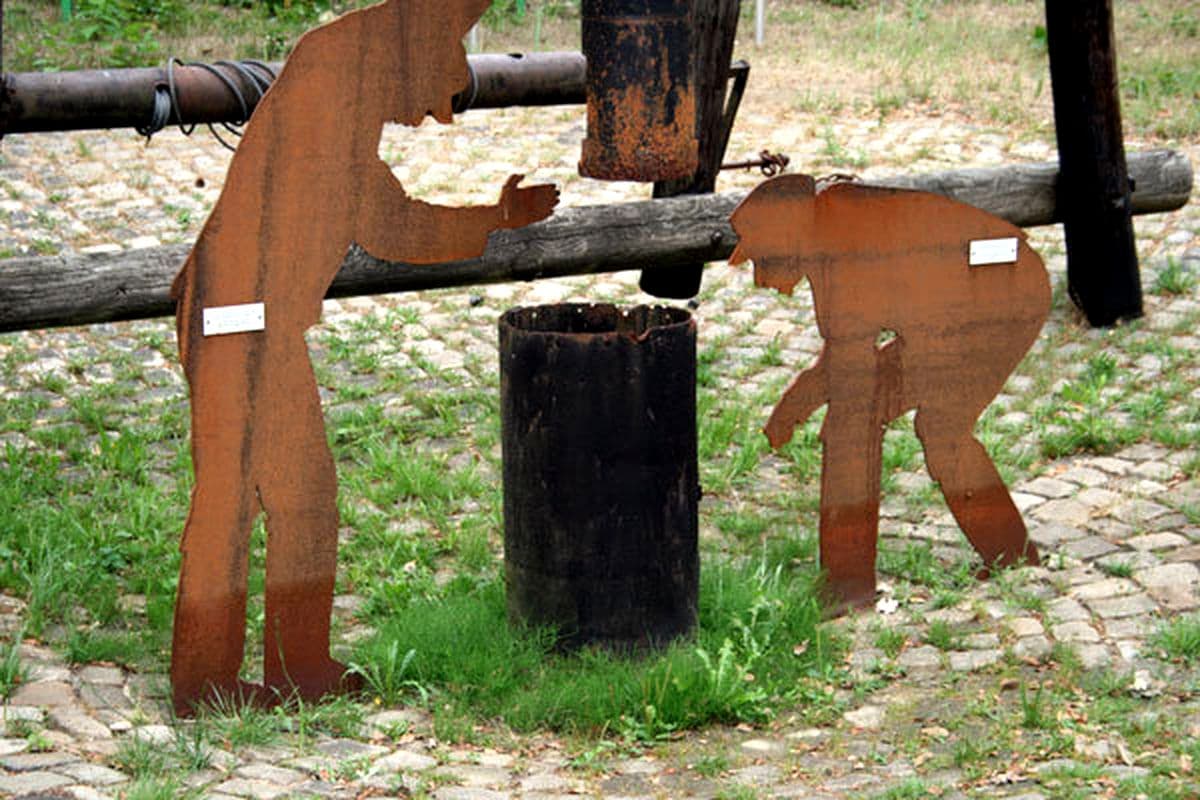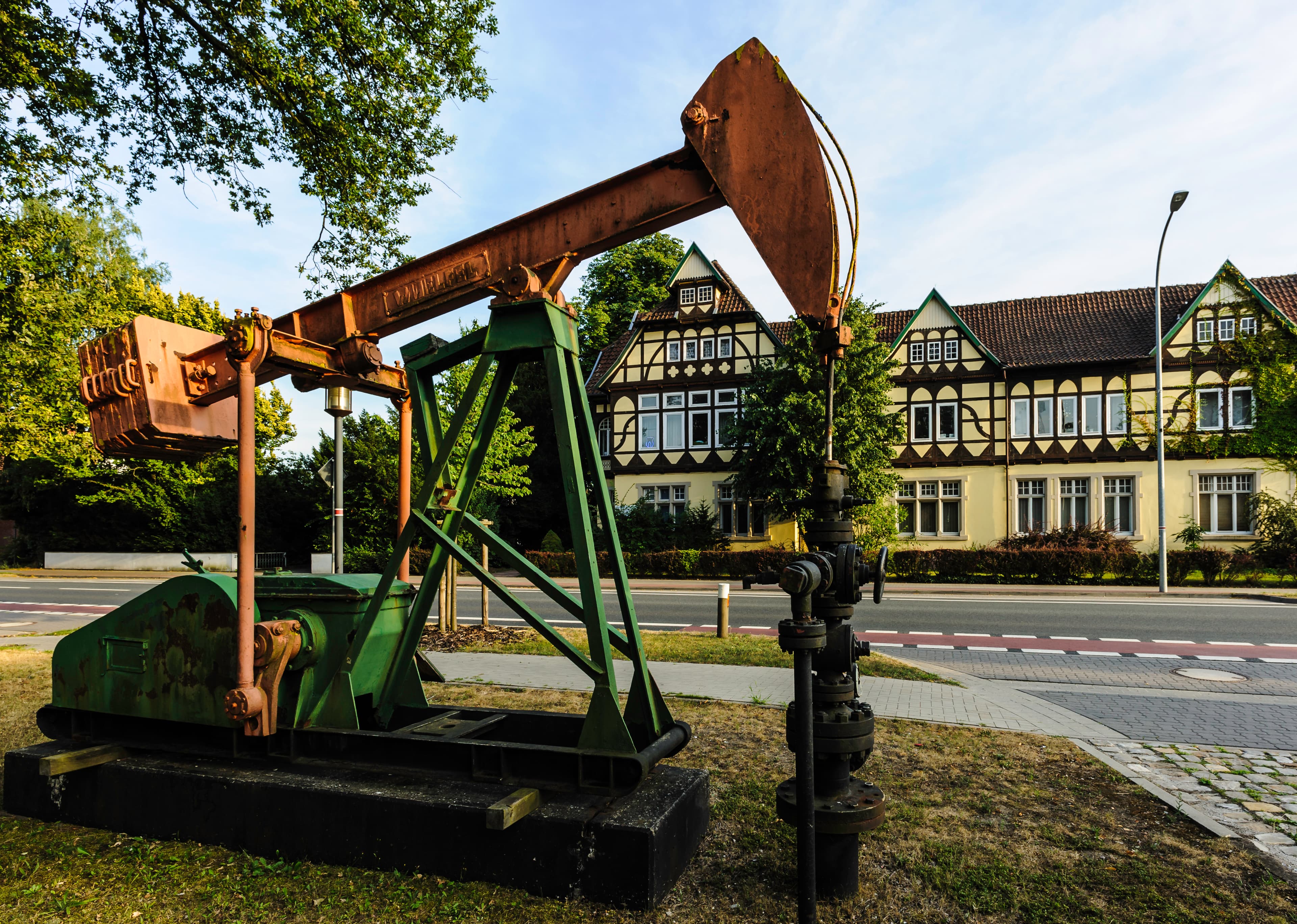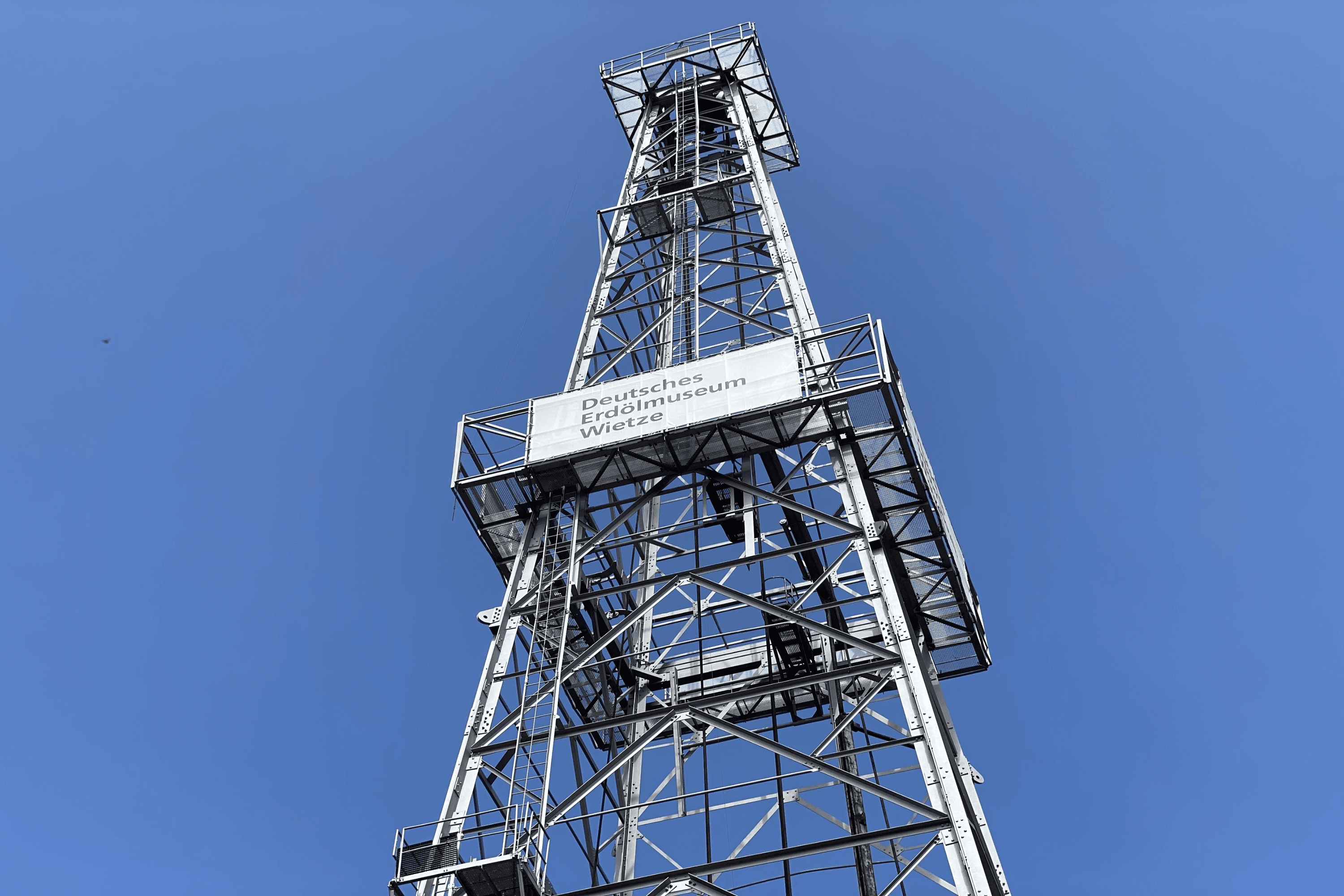
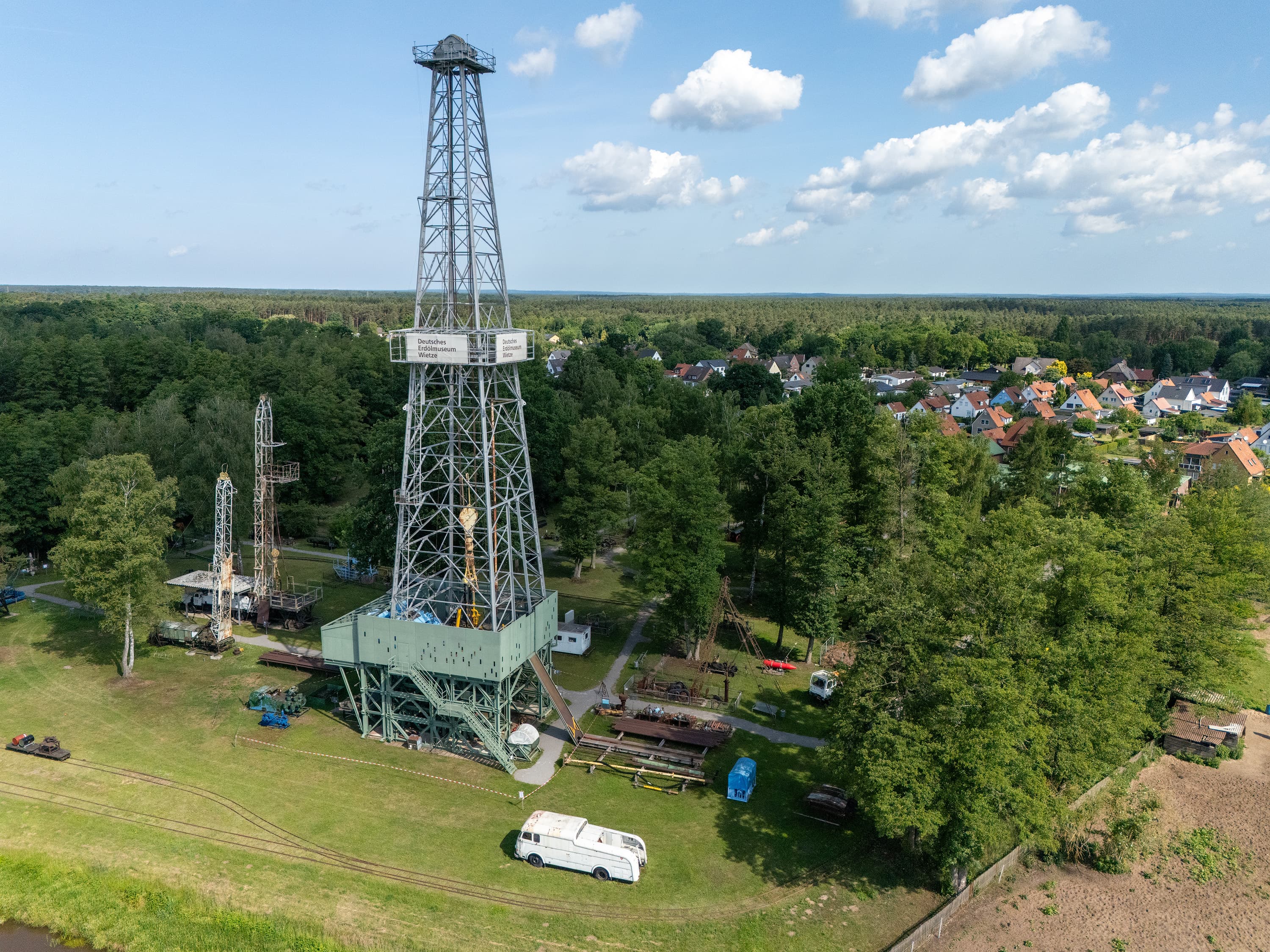
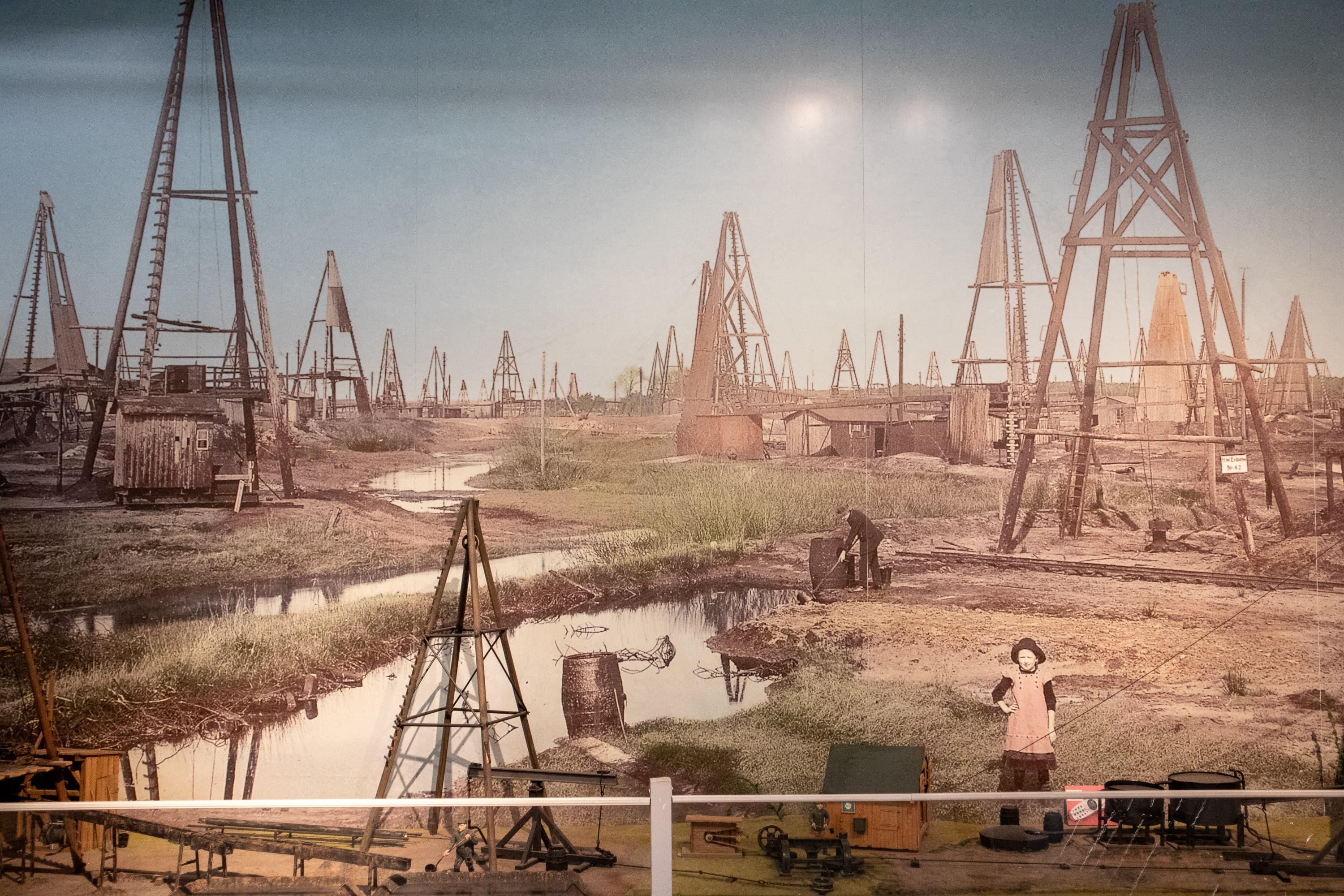
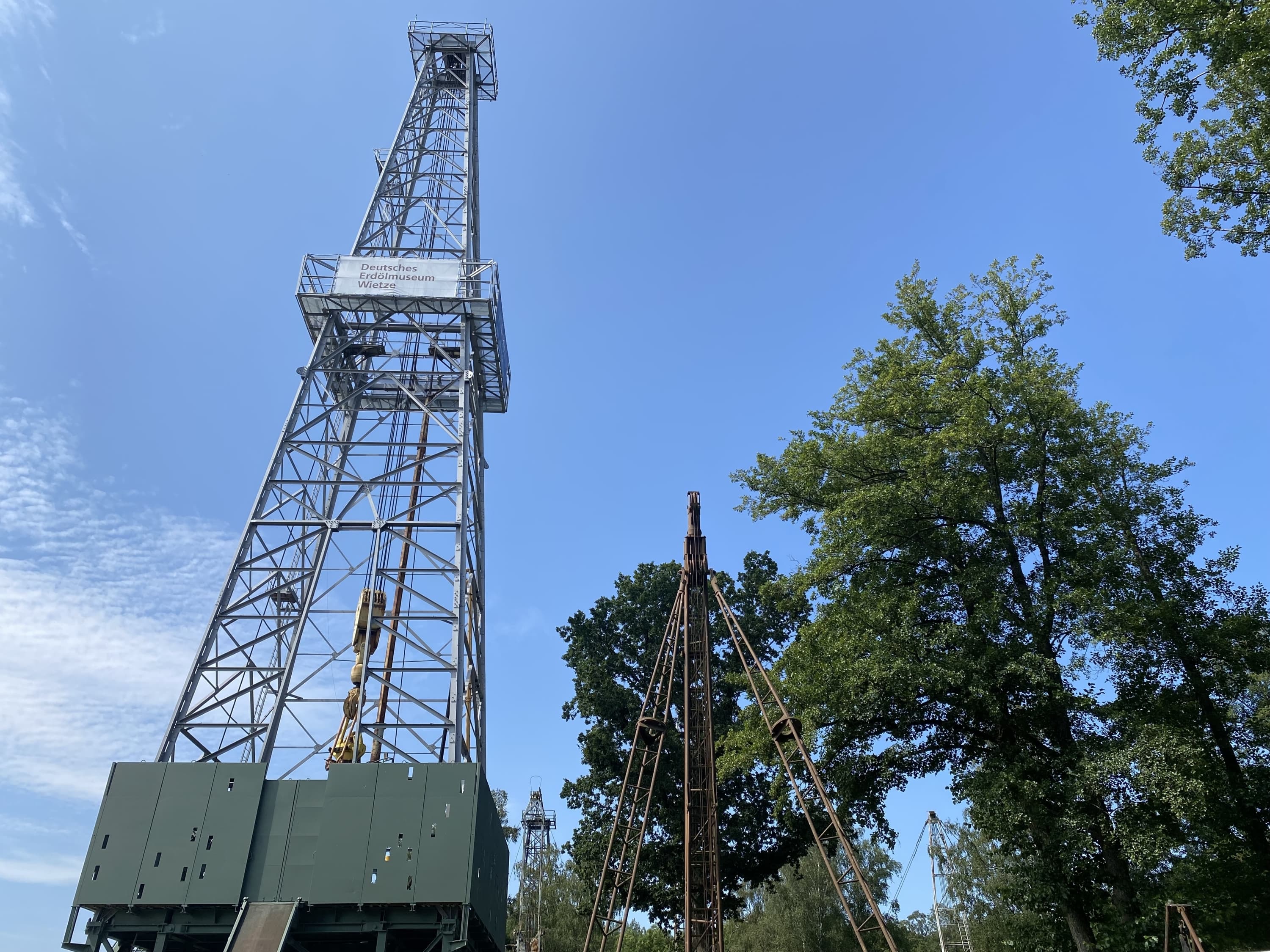
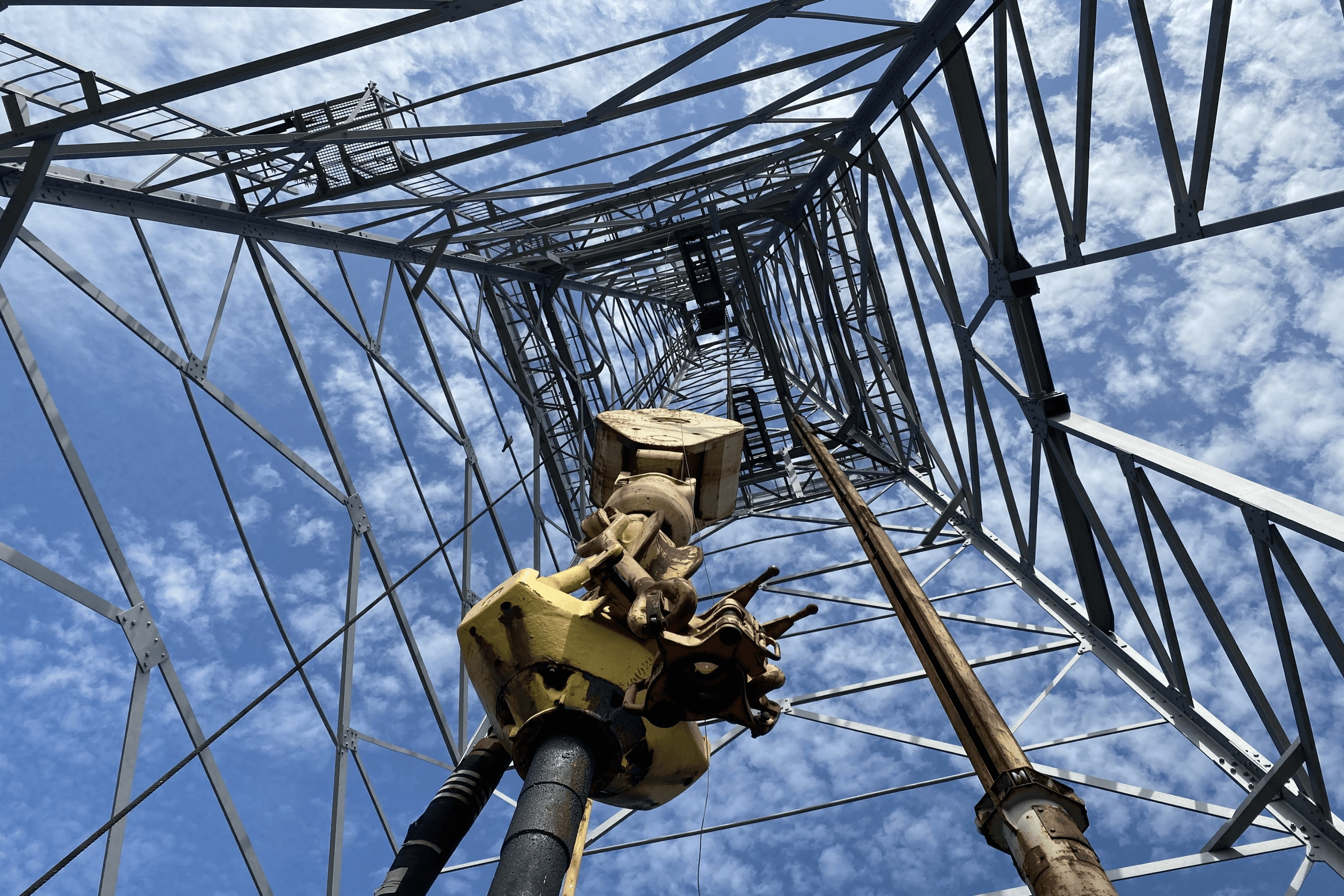
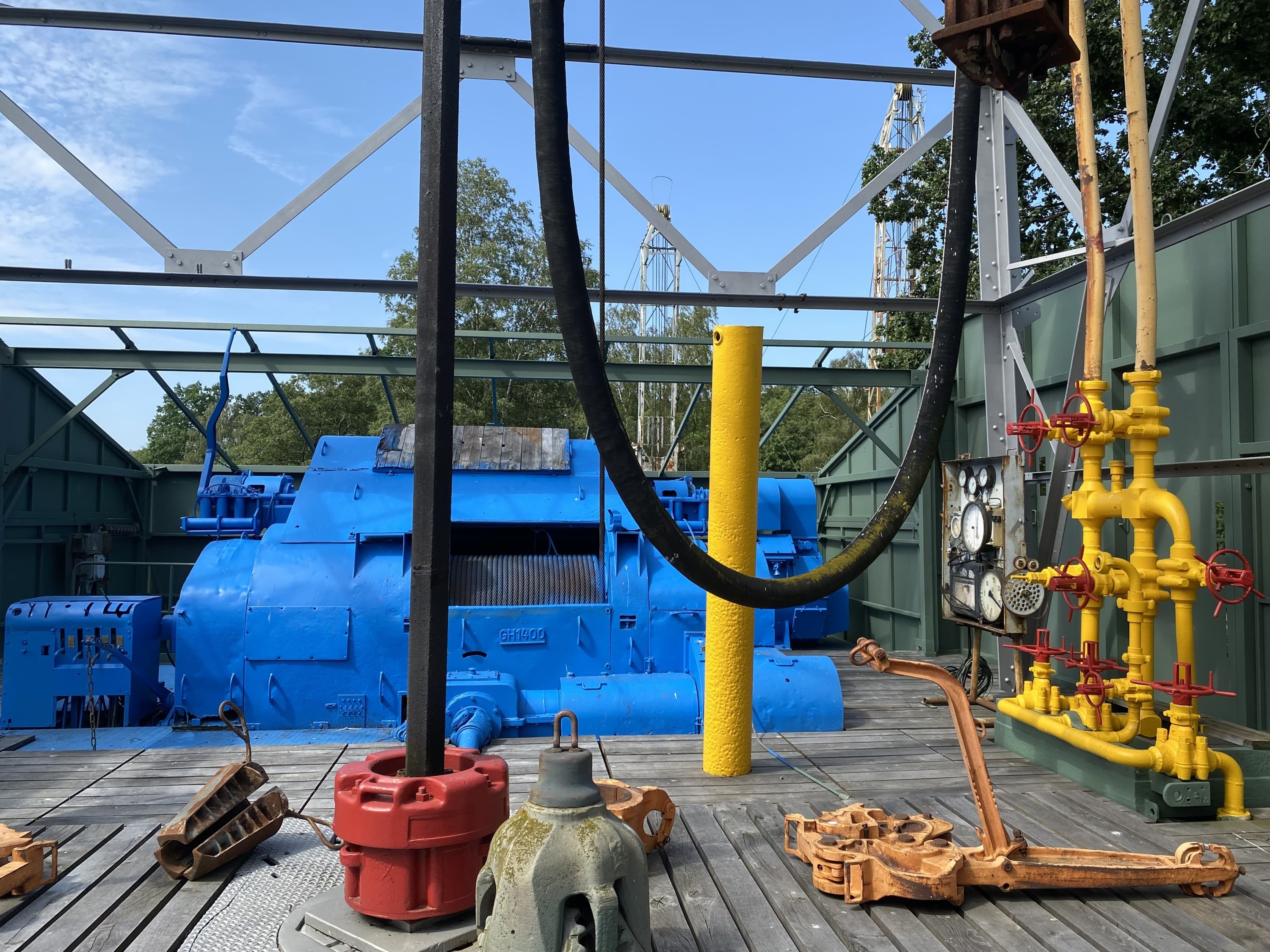
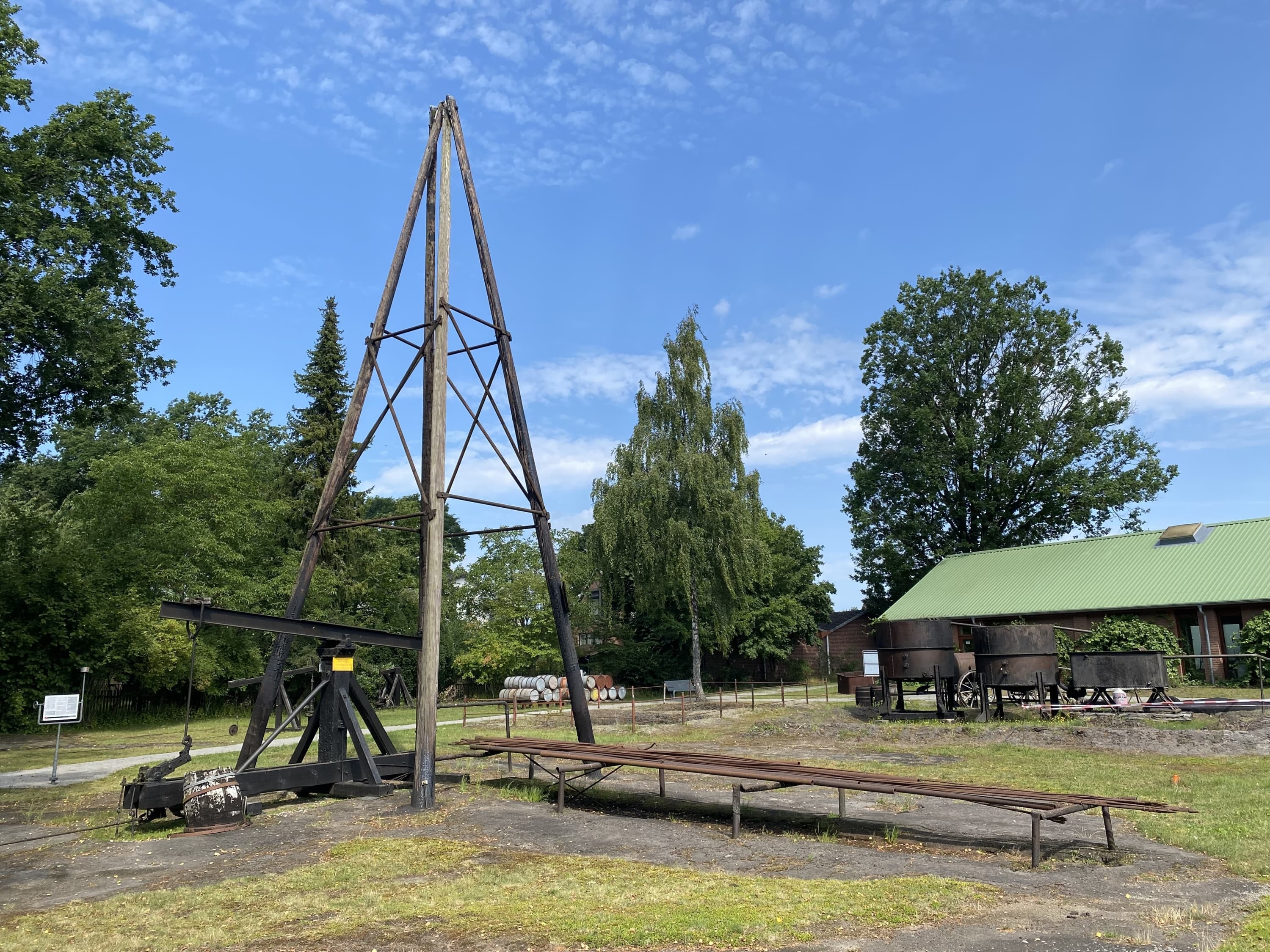
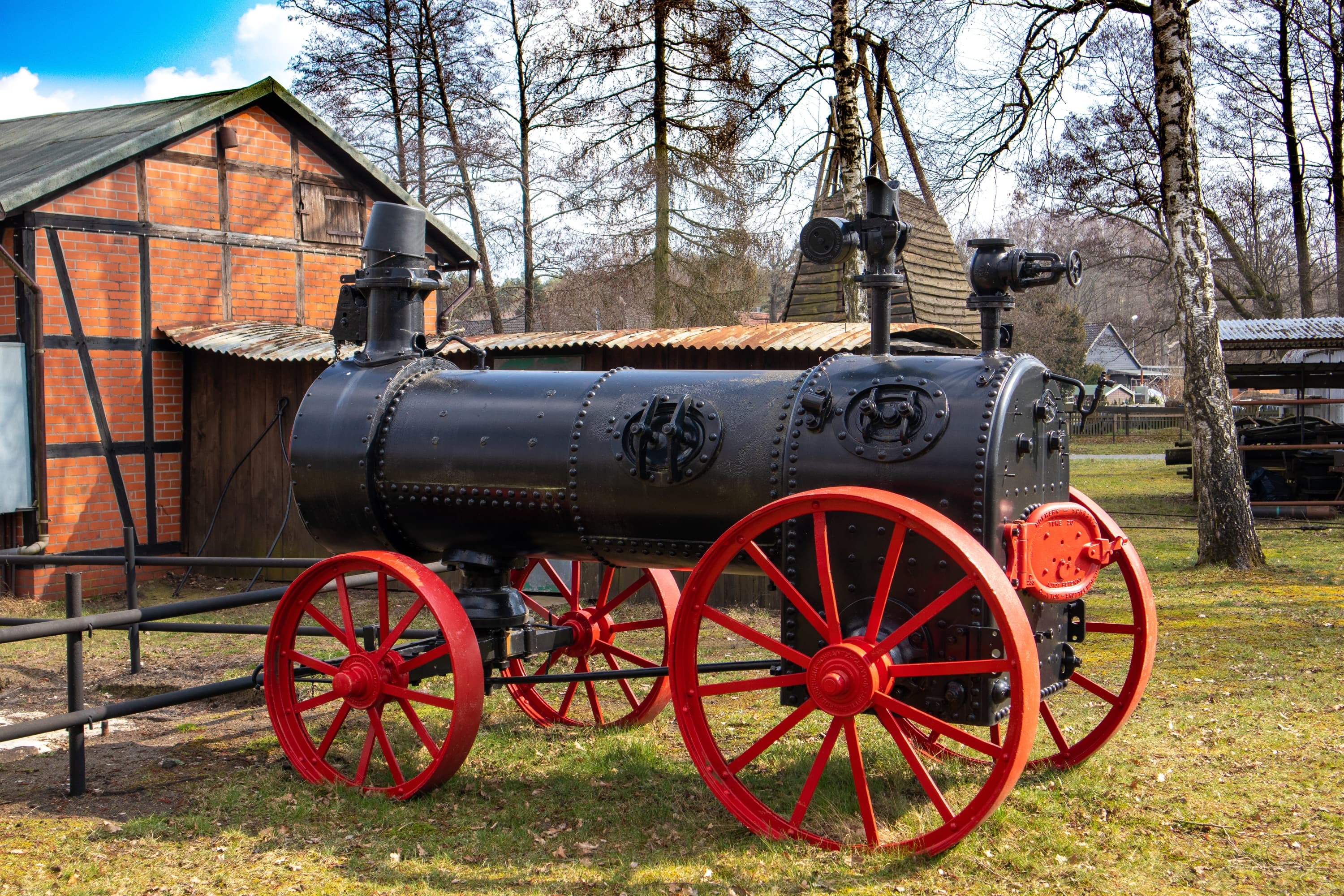
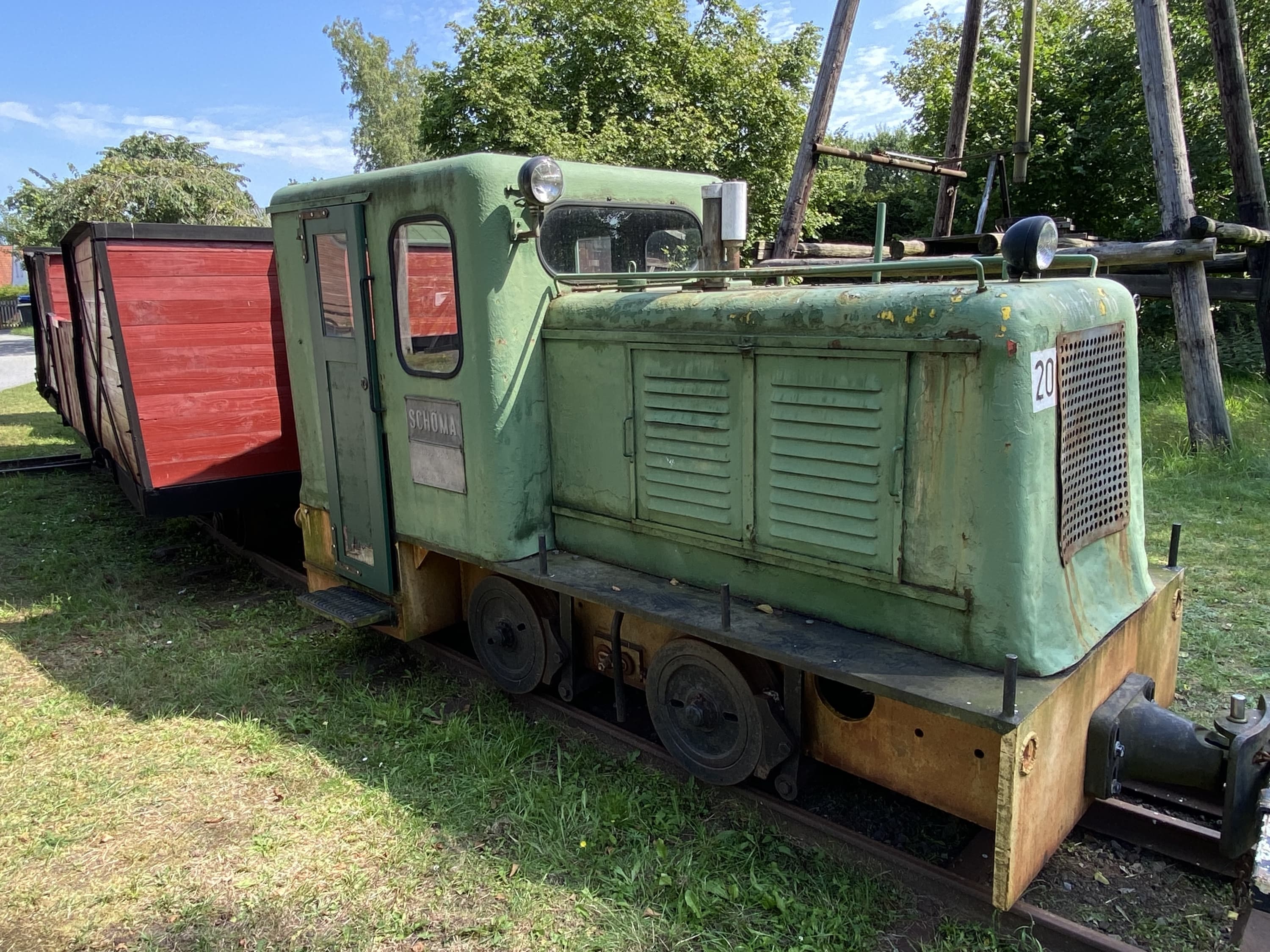
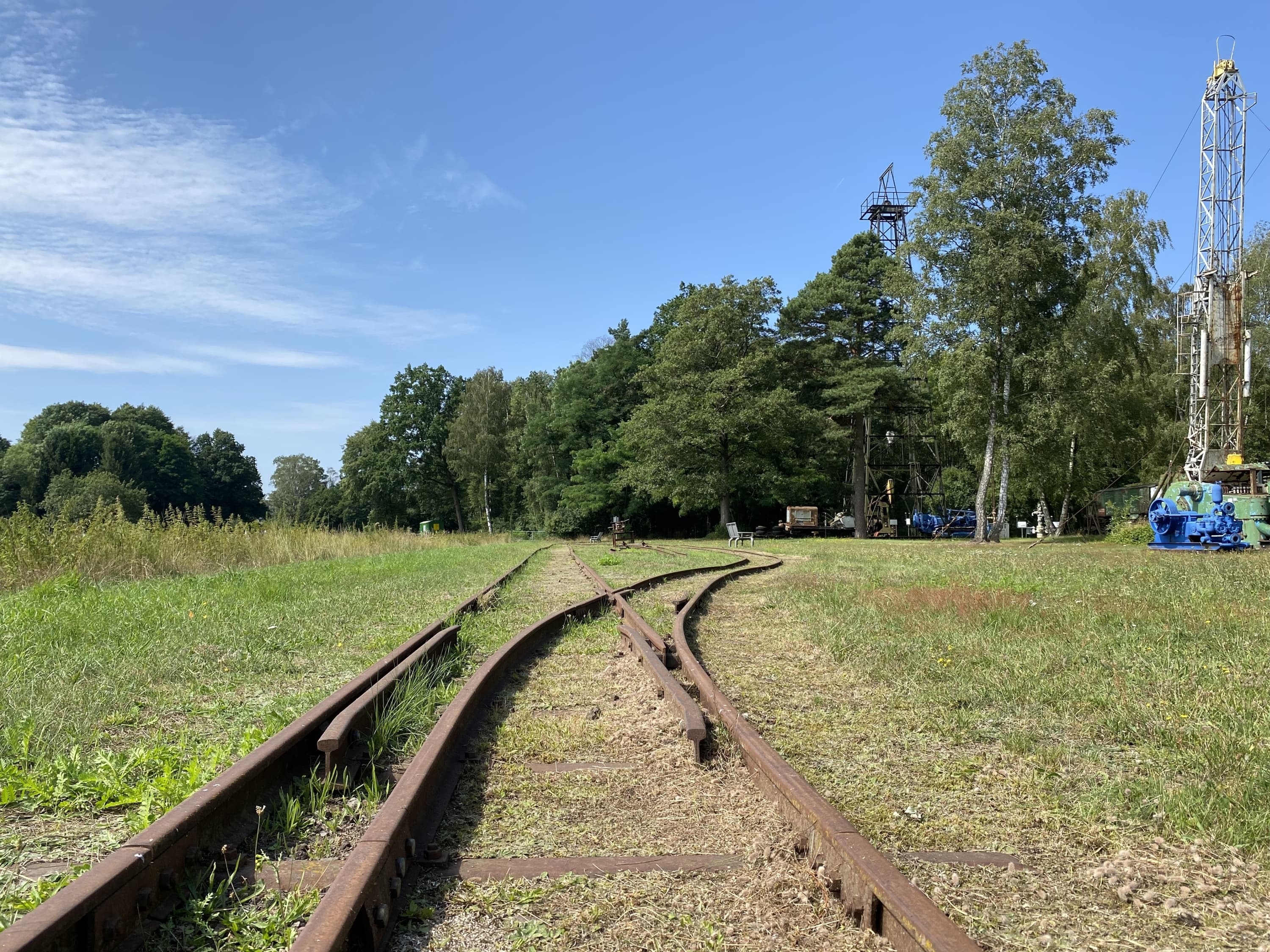
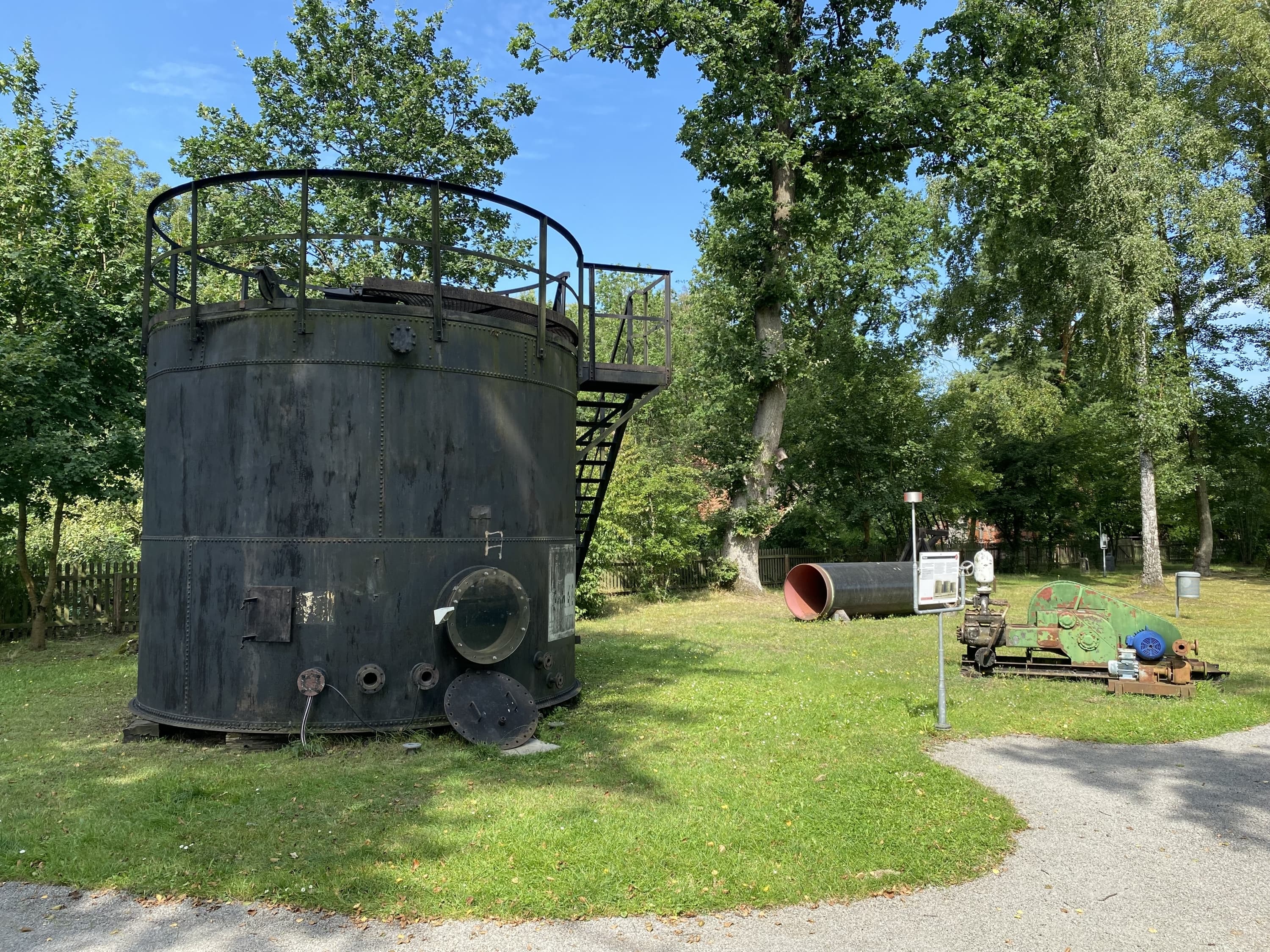
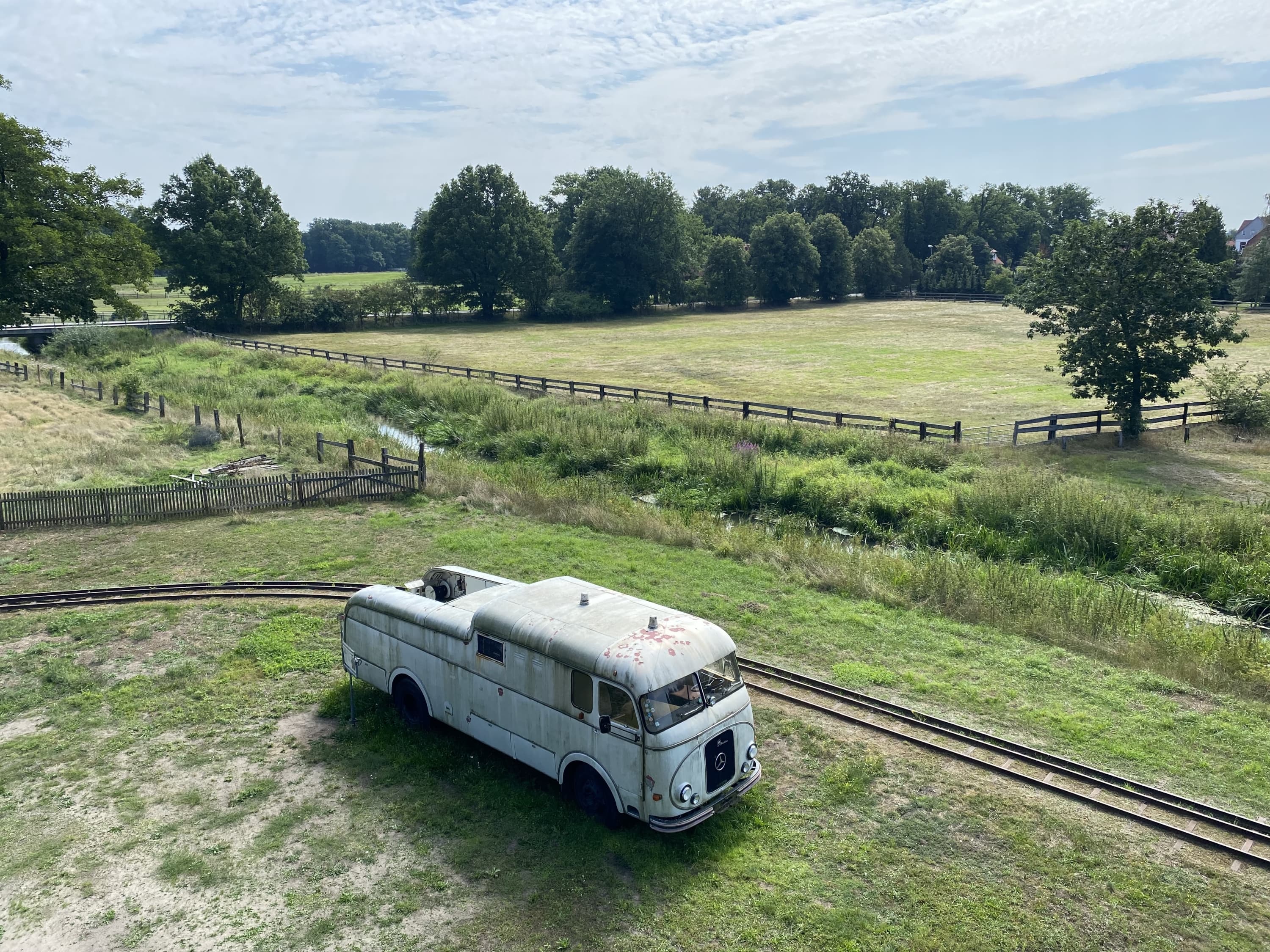
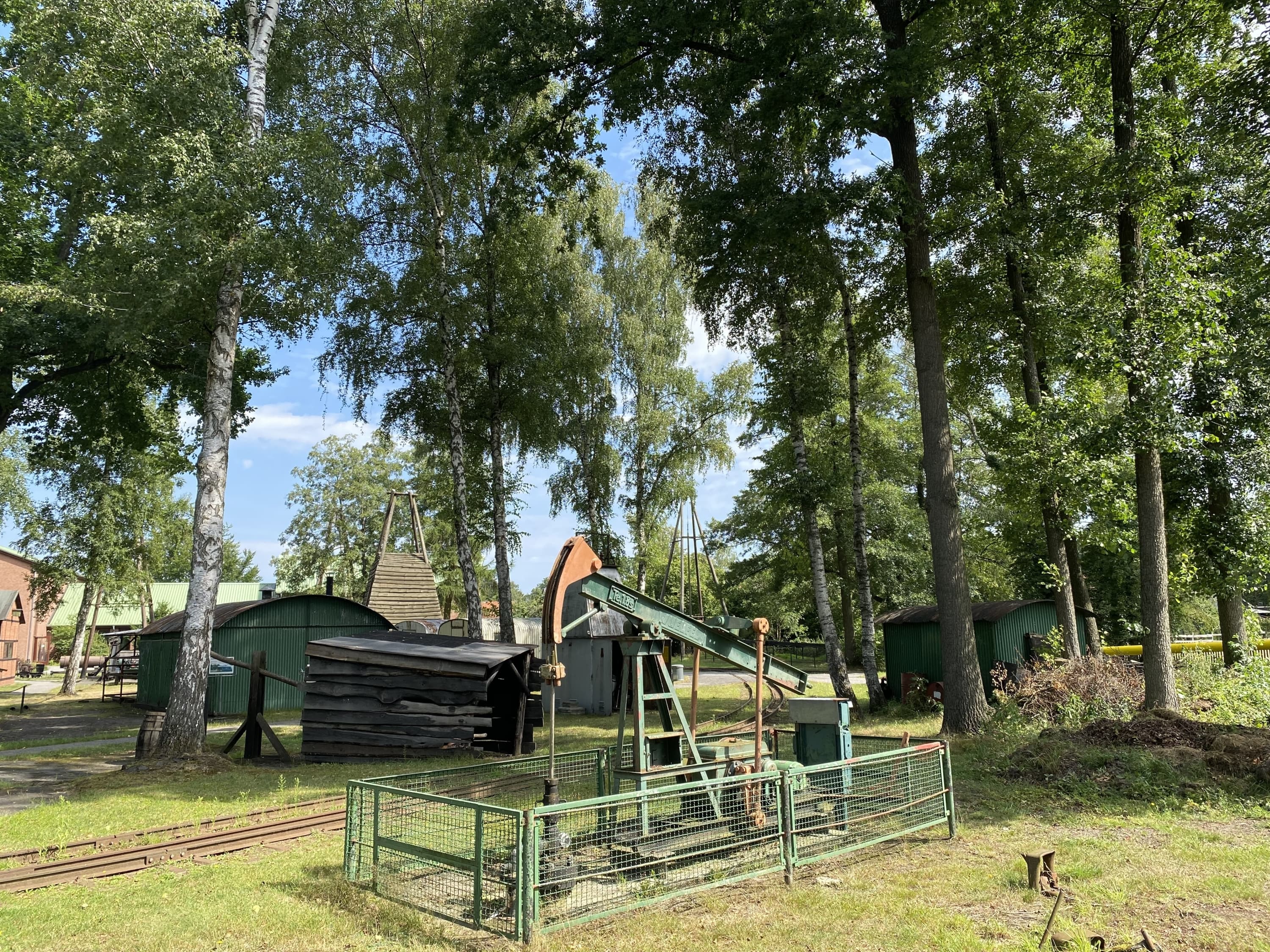
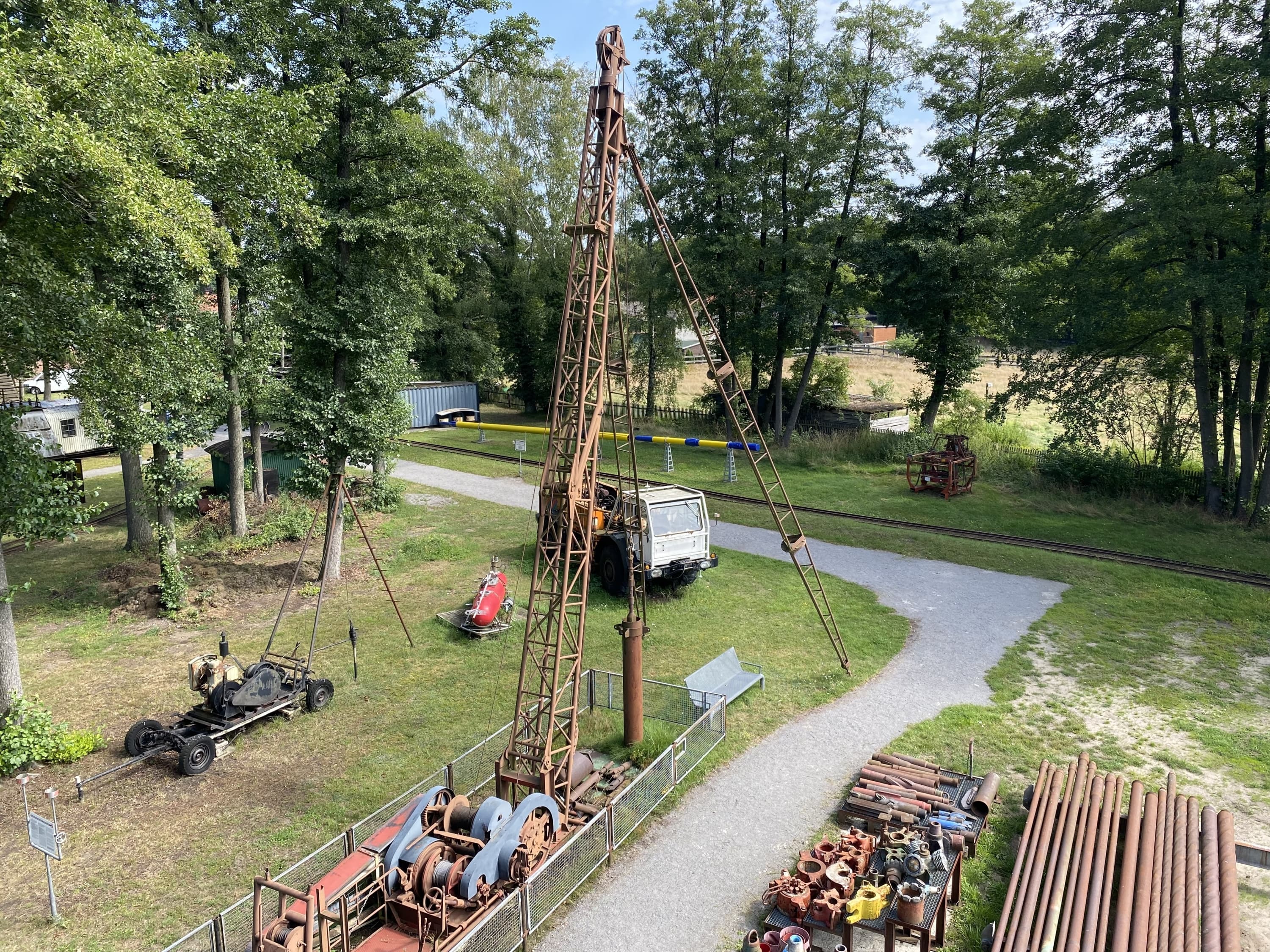
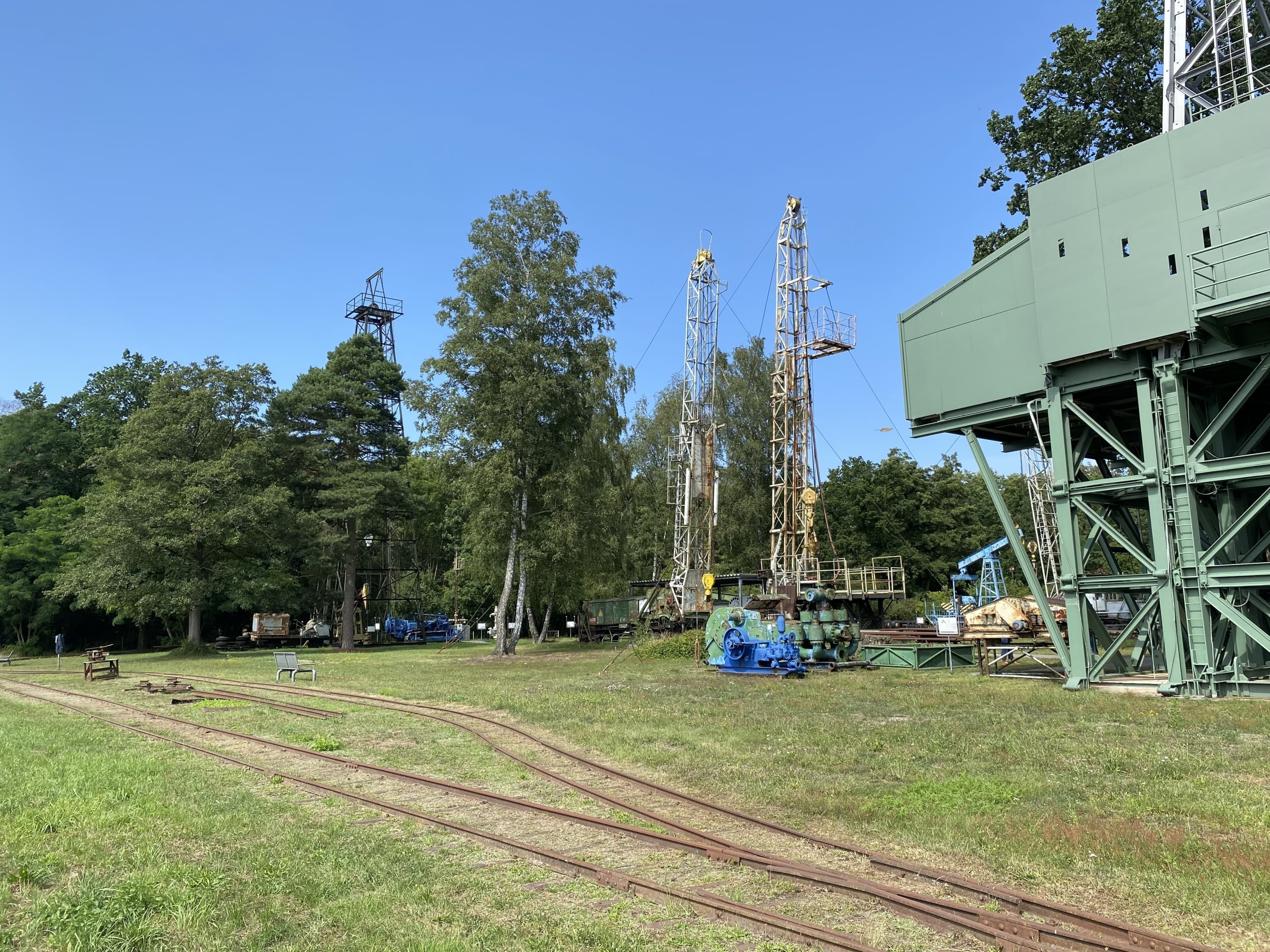
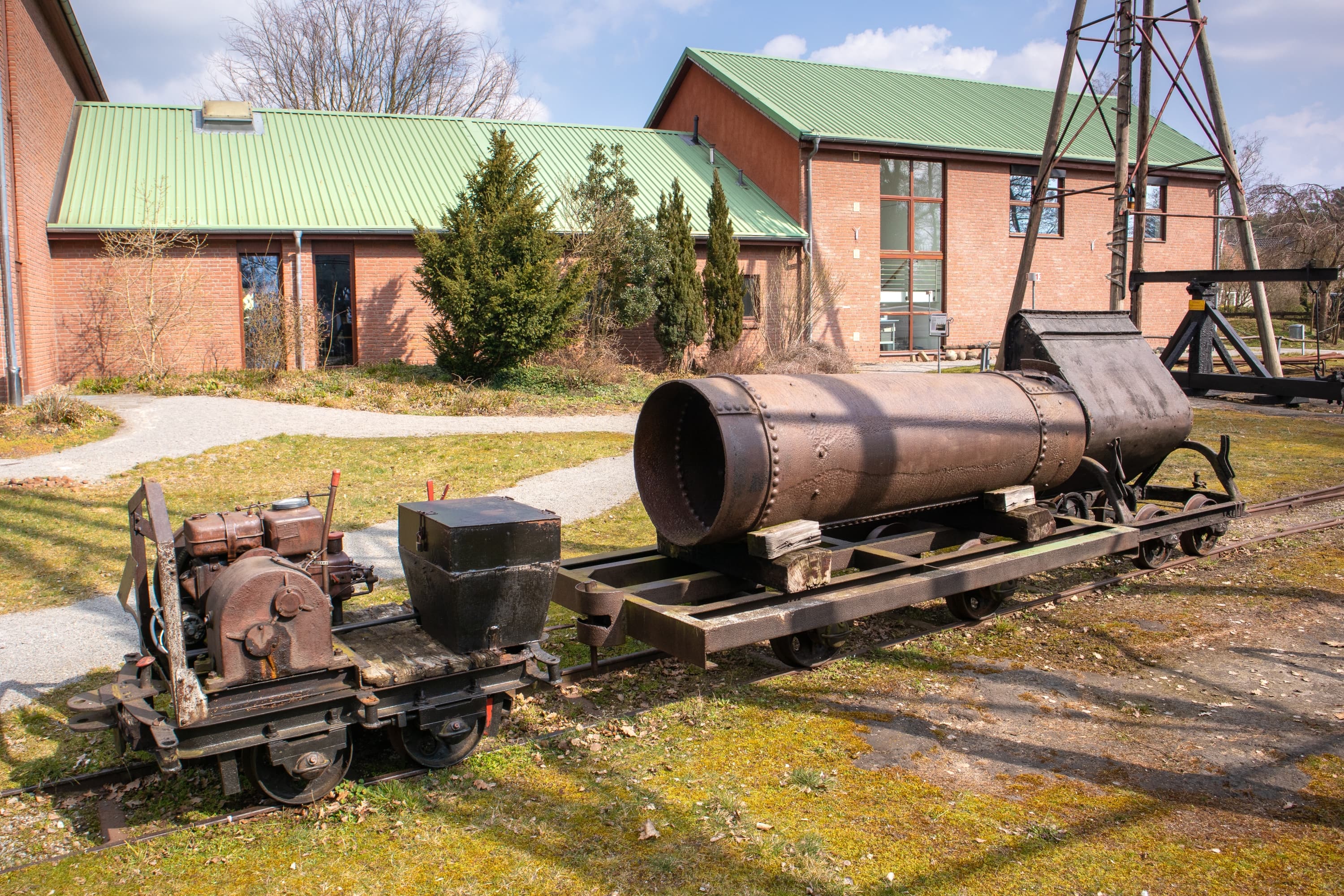
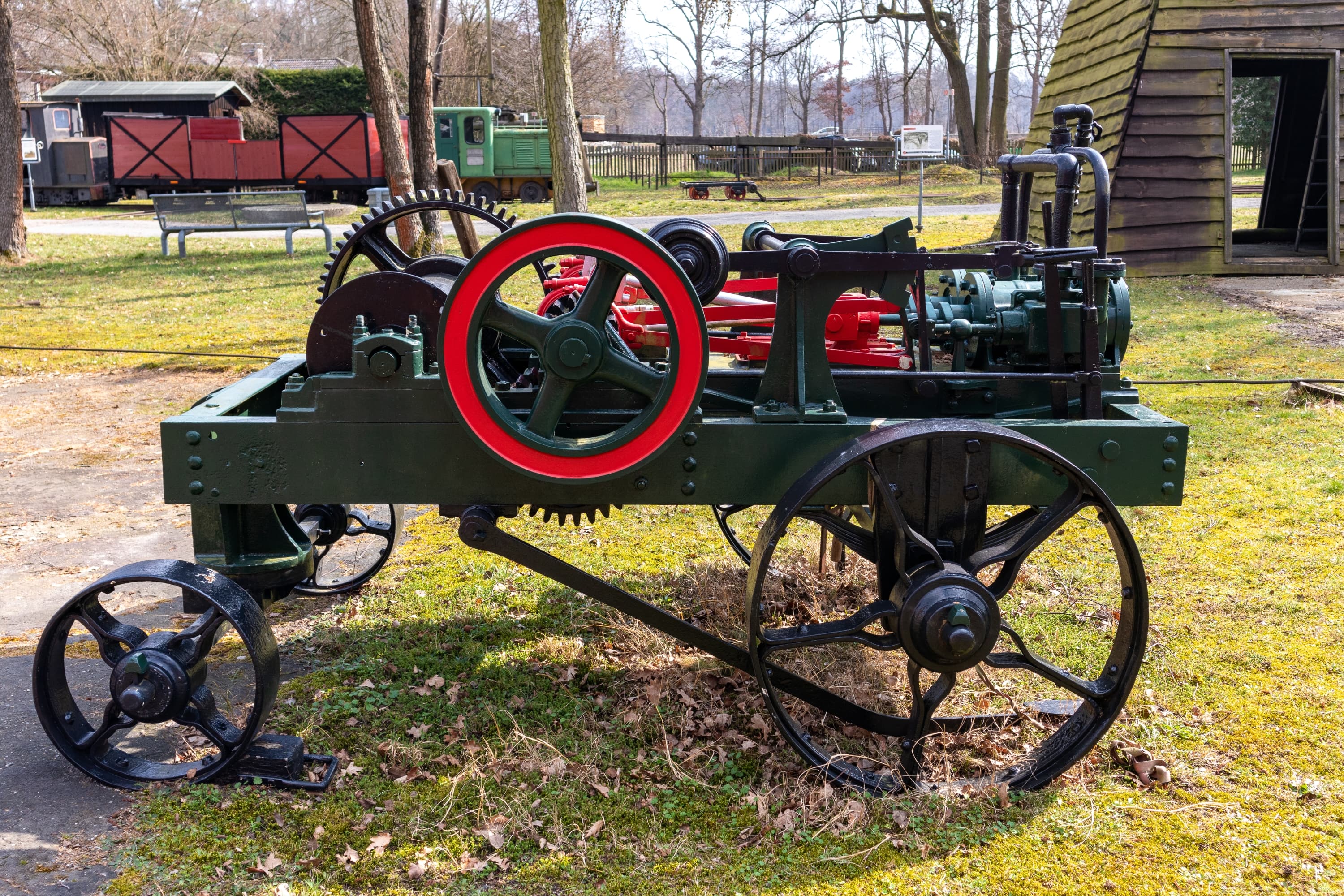
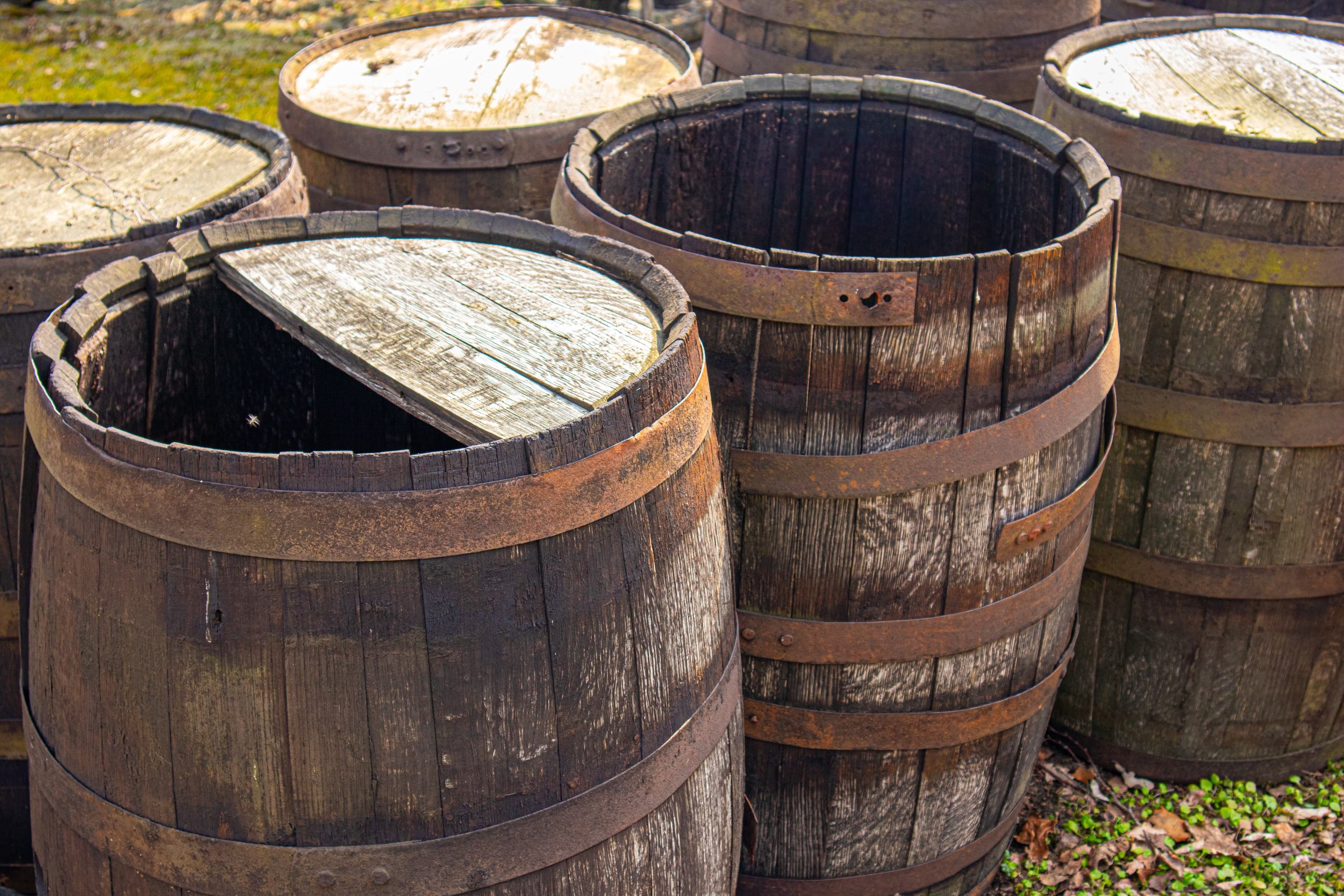
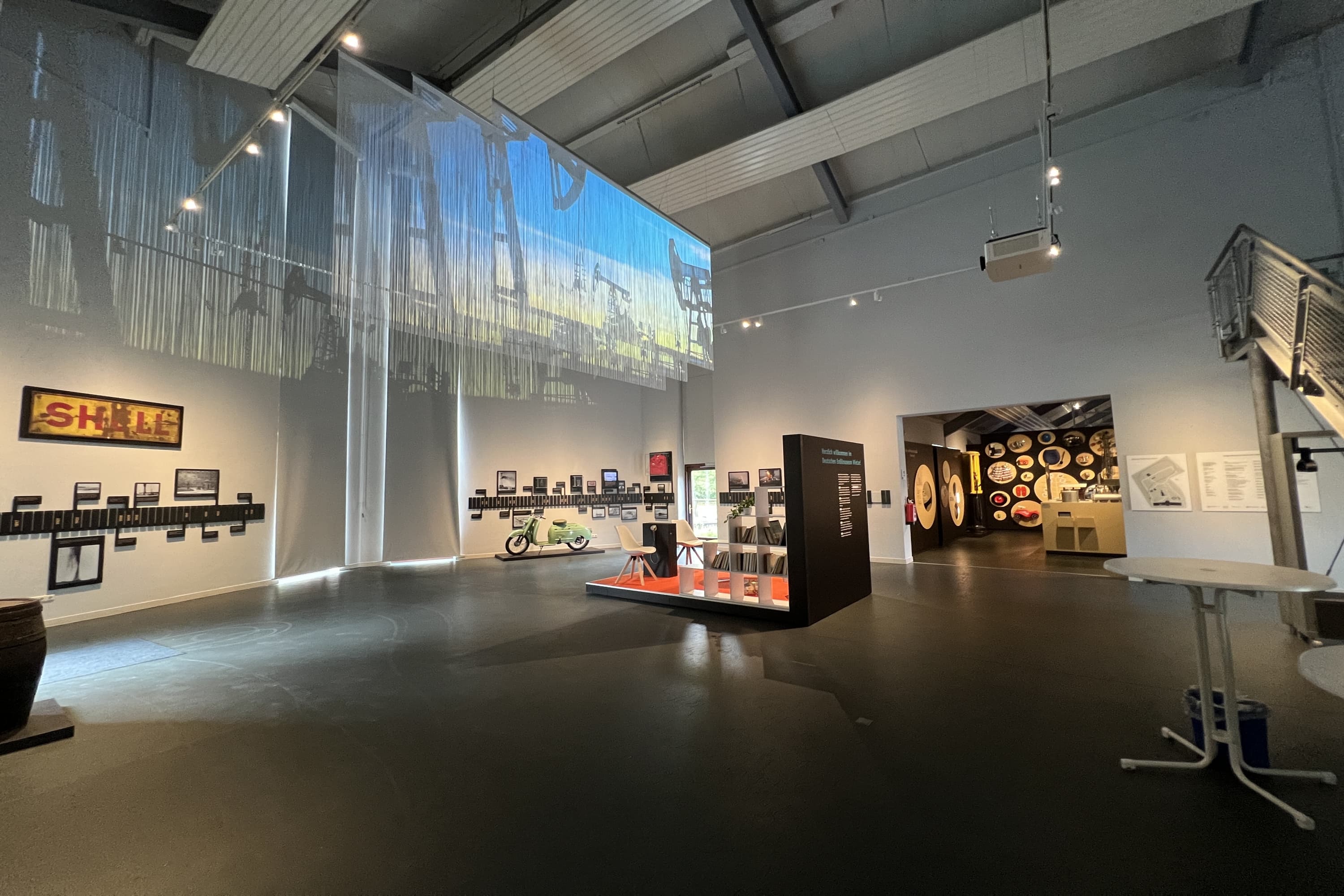
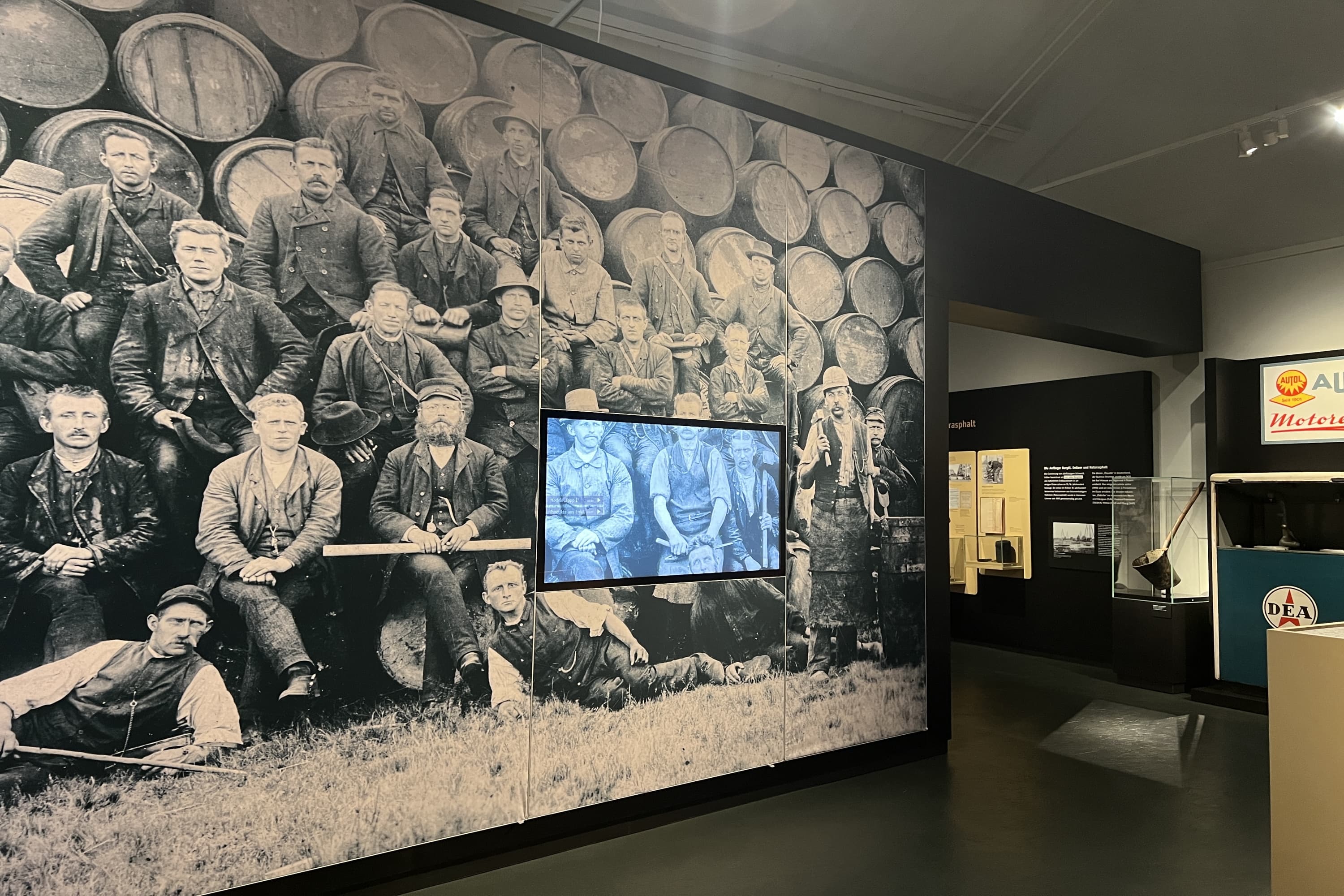
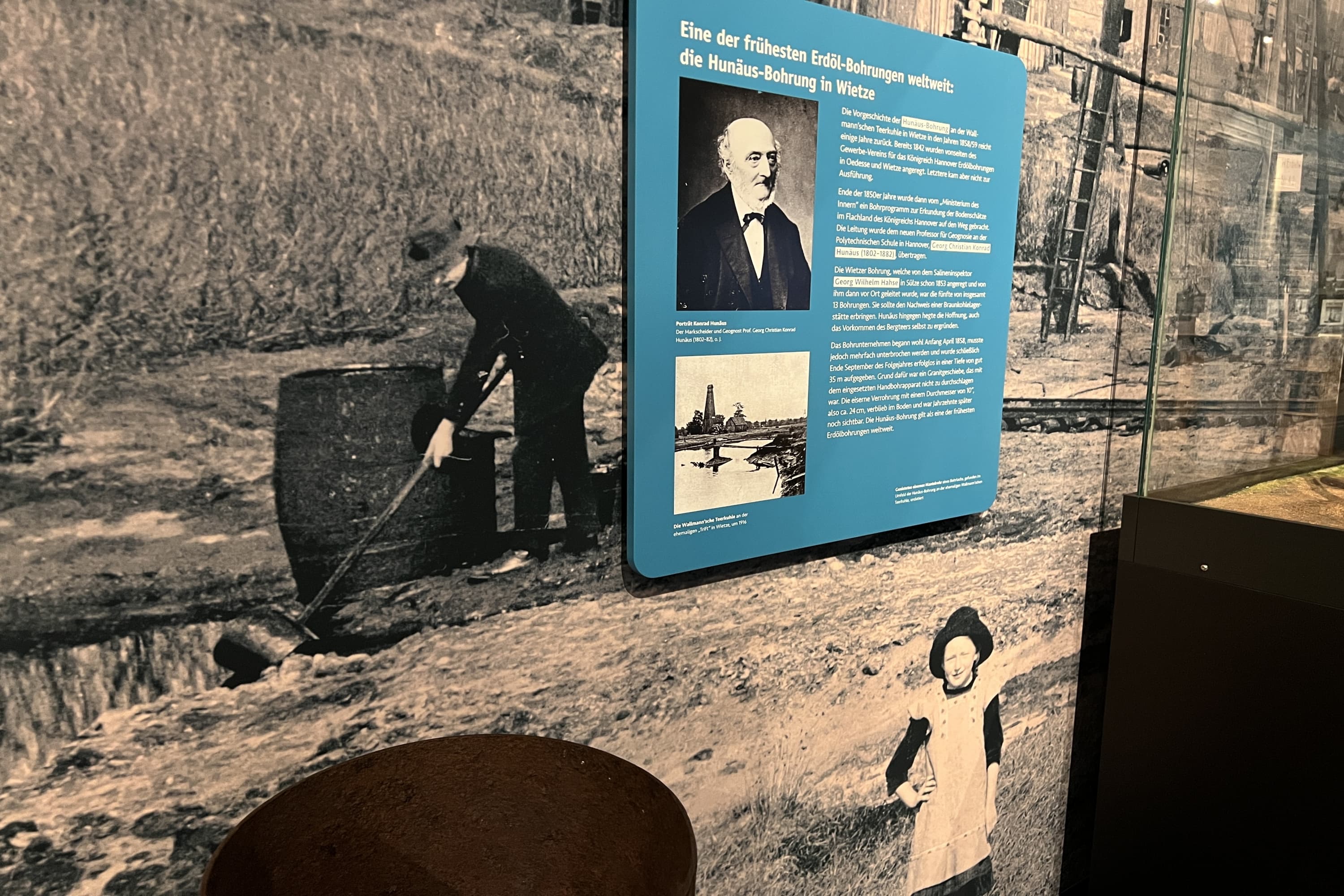
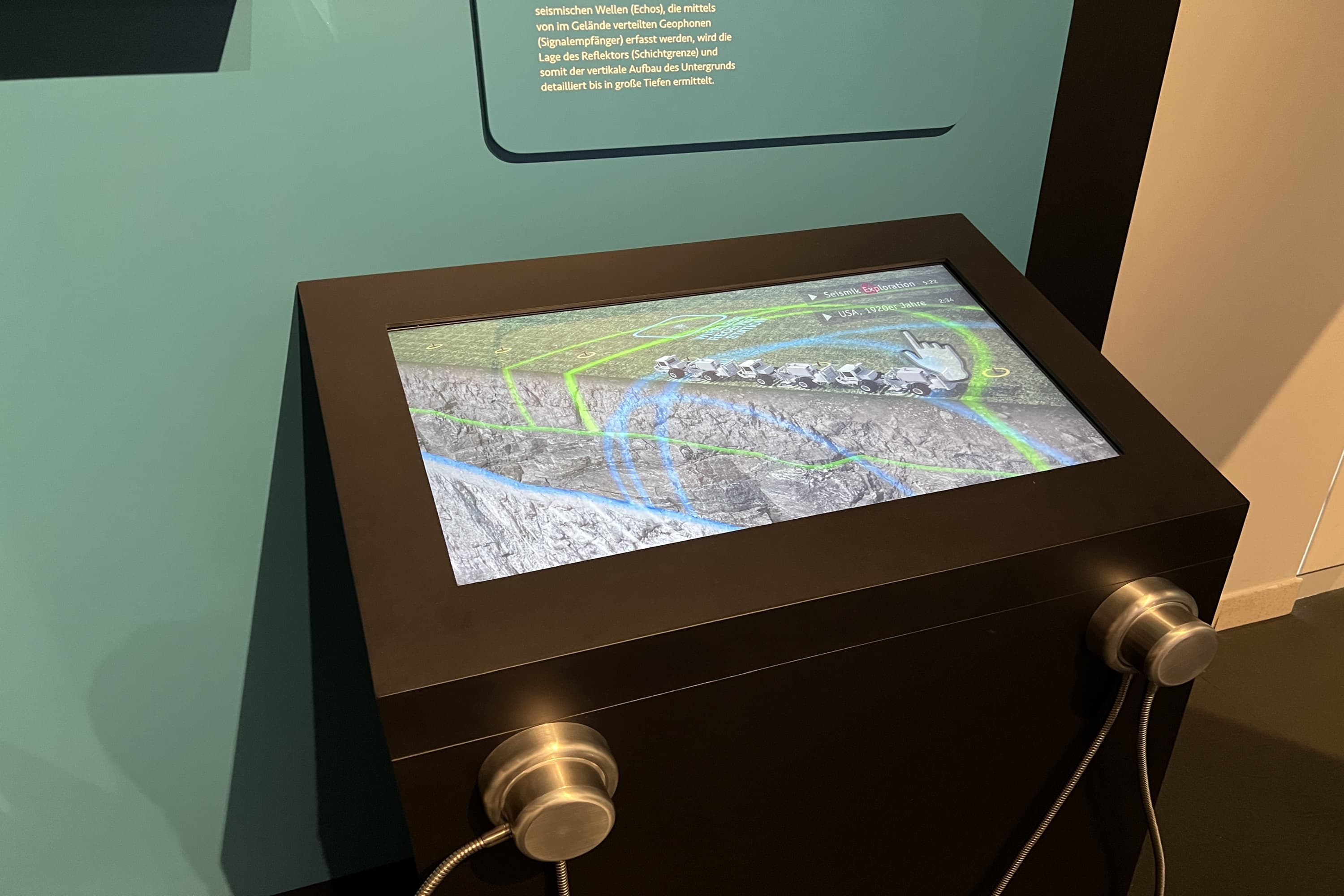
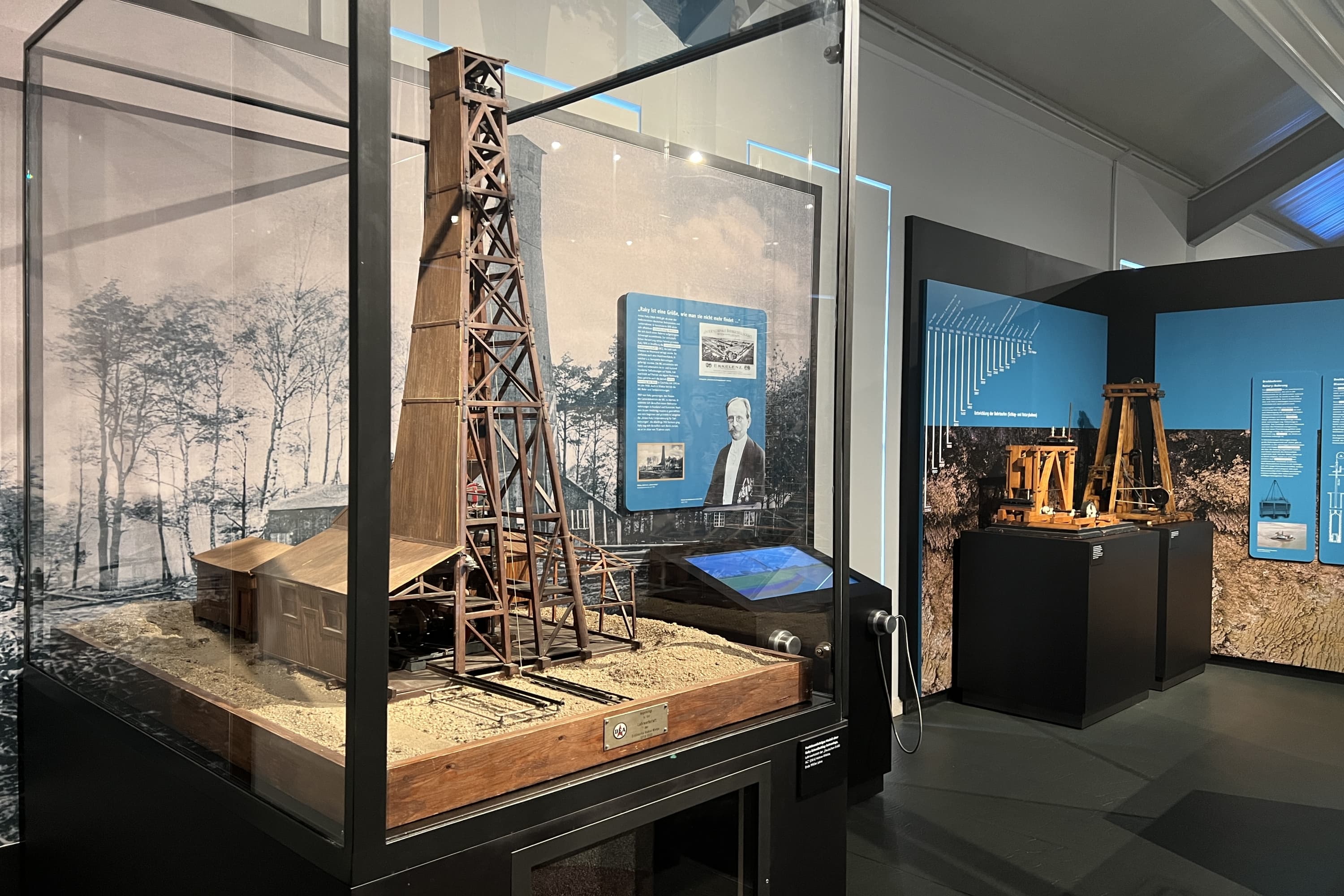
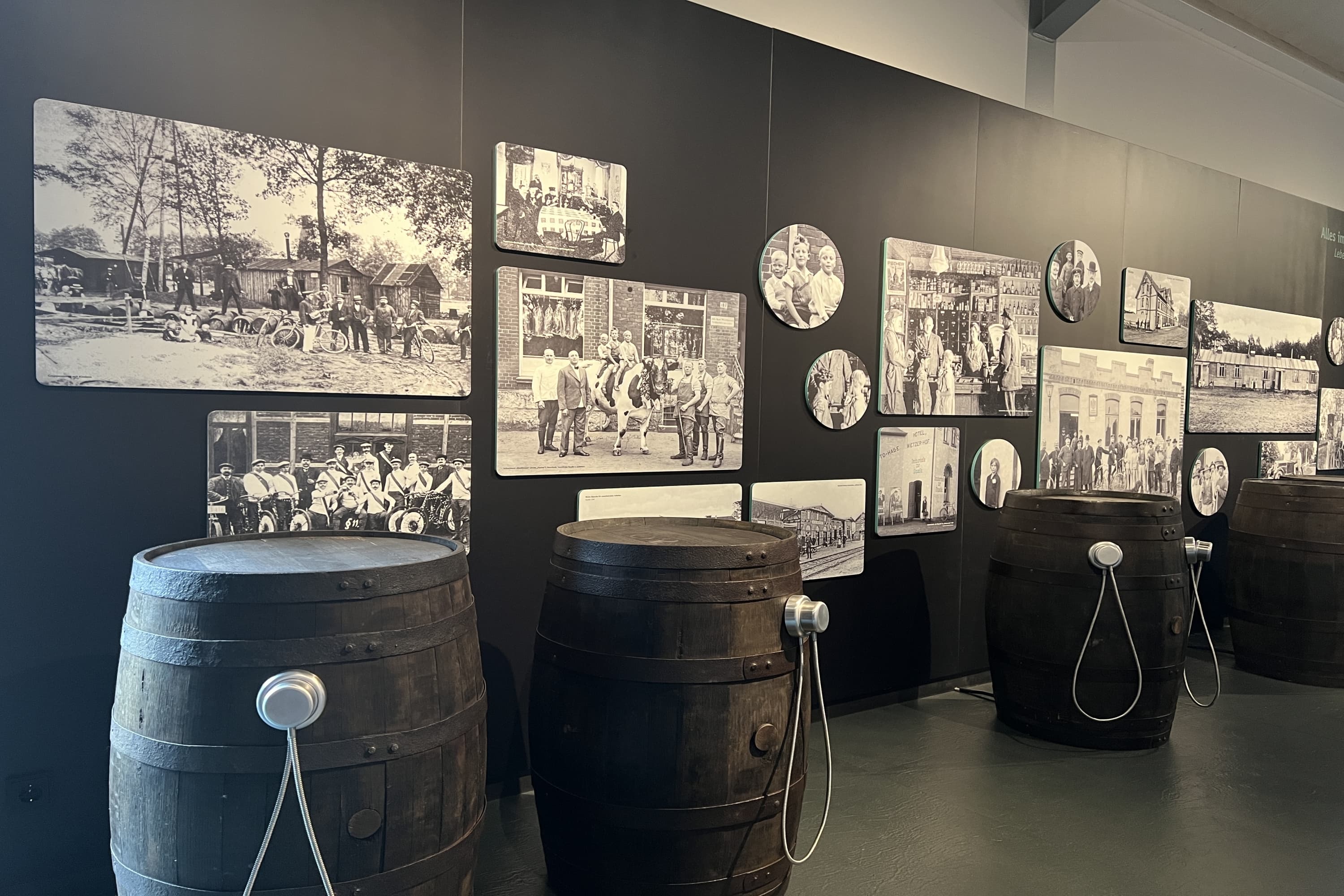
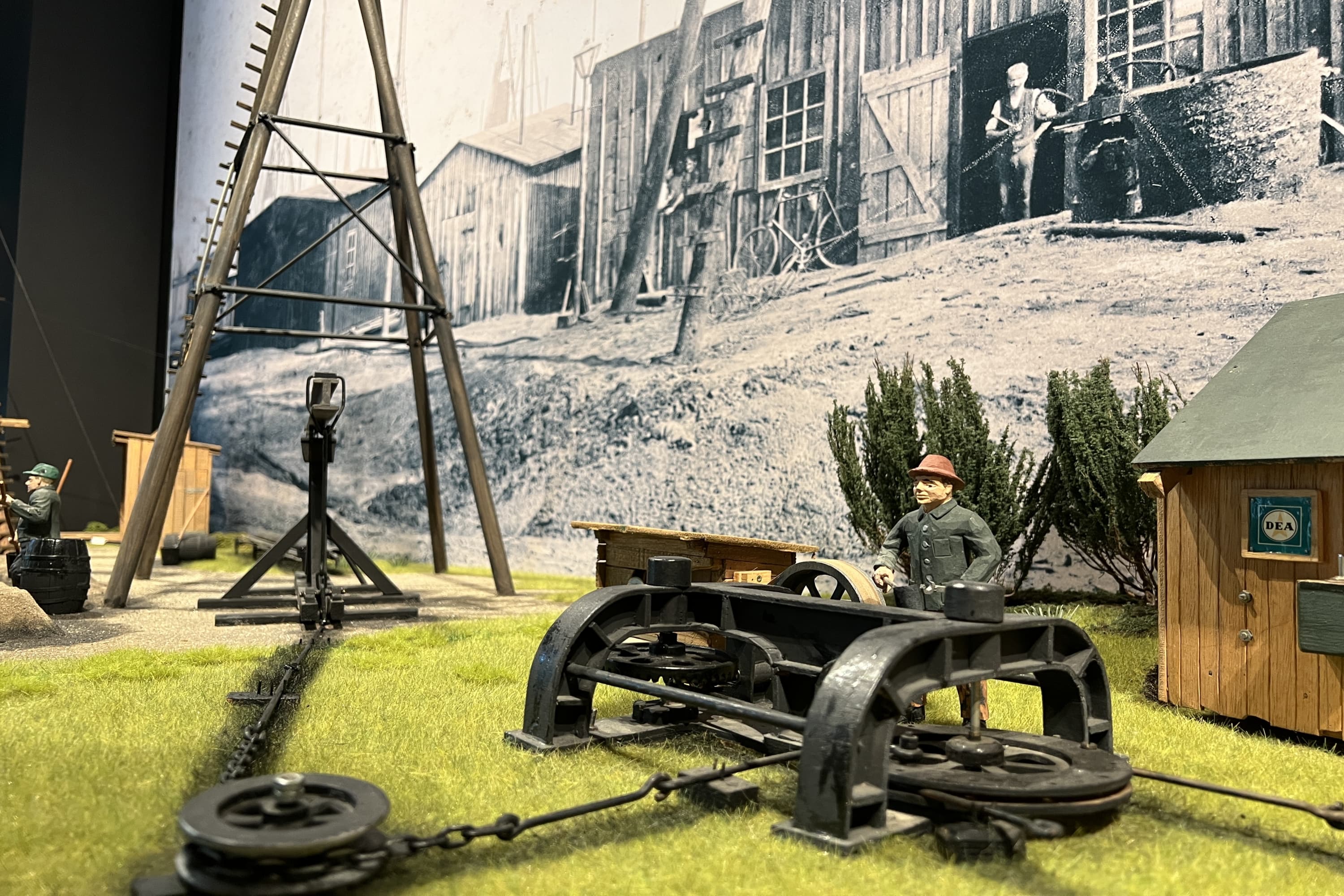
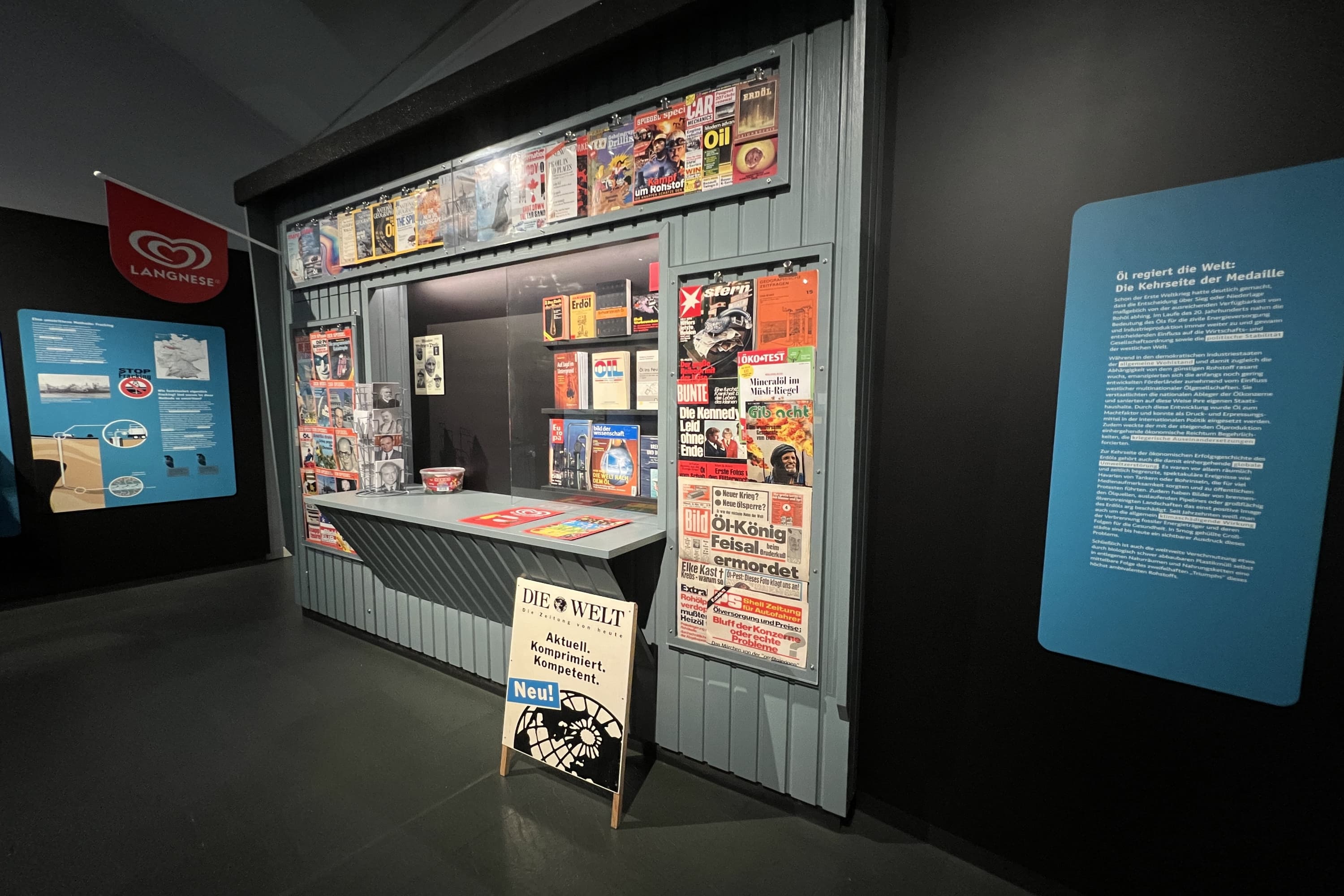
Das Deutsche Erdölmuseum
Das Deutsche Erdölmuseum Wietze wurde 1970 auf einem Teilstück des ehemaligen Ölfeldes (Betrieb Kamerun) eingerichtet. Das fast zwei Hektar große Freigelände blieb mit seinen Produktionseinrichtungen so erhalten, wie es bis 1963 in Betrieb war. Im Laufe der Zeit kamen weitere technische Anlagen hinzu, die heute eine einmalige Freiluftausstellung darstellen.
Die Bedeutung des Erdöls
In der Dauerausstellung im Museumsgebäude können die Besucher anhand von originalgetreuen Modellen und zahlreichen Fotos die Geschichte des Erdölfeldes Wietze erleben. Der Mensch steht hierbei im Mittelpunkt.
Es werden Fragen beantwortet wie:
- "Was ist und wie entsteht Erdöl?"
- "Wozu hat man Erdöl früher genutzt?"
- "Wie hat Erdöl die Landschaft und den Ort verändert?"
- "Wie findet man Erdöllagerstätten?"
- "Wie bohrt man nach Erdöl?"
- "Wie wurde Erdöl gefördert?"
- "Wie und wozu wird Erdöl verarbeitet?"
- "Was gibt es für Umweltrisiken bei der Förderung und beim Transport?"
Hierbei werden unter Anderem die geophysikalischen Explorationsmethoden sowie die Bohr- und Fördertechniken dargestellt. Auch die Erdöl-Entstehung wird anschaulich beschrieben. Der bergmännische Betrieb kann als Nachbau einer Förderstrecke besichtigt werden.
Das Ölfieber in Wietze - Klein Texas der Südheide
Eine der ersten Ölbohrungen der Welt wurde nicht in Texas oder Dubai niedergebracht, sondern in der südlichen Lüneburger Heide. 1858/59 ließ der Geologe Georg Konrad Christian Hunäus in Wietze westlich von Celle eine Flachbohrung in der sog. Wallmann'schen Teerkuhle abteufen. Aus dieser Teerkuhle war bereits seit 1652 obertägig zutage tretendes Schweröl gewonnen worden, das vor allem als Wagenschmiere, aber auch als Heilmittel, verhandelt wurde. Den Standort der sogenannten Hunäus-Bohrung, die bei knapp 36 m abgebrochen werden musste, kann man heute noch besichtigen.
1899 brach dann das Ölfieber in Wietze aus, als der Bohrmeister Hasenbein aus Sehnde erstmals eine eruptive Bohrung nördlich des Dorfes und gleichnamigen Flüsschens Wietze abteufte. Der danach einsetzende Ölboom veränderte das kleine Heidedorf Wietze rasant. Innerhalb nur weniger Jahre schossen Bohr- und Fördertürme wie Pilze aus dem Boden, um 1920 waren bereits ca. 2000 Bohrungen getätigt worden.
In kurzer Folge entstanden zudem zahlreiche Neubauten wie
ein Ölbahnhof
eine Leichtöl-Raffinerie
Hotels und Unterkünfte für die Bohrarbeiter
Dutzende großer Tankanlagen, darunter der größte Öltank "des Continents"
eine Ölpier an der Aller zum Transport des Öles auf dem Wasserweg bis nach Hamburg
Die Wietzer Bauern profitierten davon in erheblichem Maße, da noch bis 1934 die Gewinnung von Erdöl nicht vom Staat konzessioniert wurde, sondern den Grundeigentümern oblag.
Wietze war bis 1920 das produktivste Erdölfeld in Deutschland!
Die Anzahl der Bohrbetriebe nahm rasch zu, nach wenigen Jahren waren mehrere Dutzend Firmen vor Ort. Wietze förderte 1909 fast 80 % des deutschen Öls. 1918 wurde sogar ein Erdölbergwerk gebaut, das zuletzt über 95 Kilometer Streckenlänge verfügte.
1963 wurde die Erdölförderung in Wietze eingestellt, doch bis heute sind noch überall Spuren der Erdölindustrie zu entdecken.
Wahrzeichen der Gemeinde Wietze und weithin sichtbare Landmarke ist ein originaler Bohrturm der Firma Wintershall von 1961 mit 54 m Höhe.
Ein modernes Museum
Neben dem historischen Exkurs wird im Deutschen Erdölmuseum auch ein Ausblick auf die zukünftige Bedeutung des Erdöls gegeben. Kritische Fragestellungen zur Umweltproblematik, aktuelle Entwicklungen, Risikomanagement und Recyclingmöglichkeiten werden in der Ausstellung aufgegriffen, beleuchtet und hinterfragt.
Führung durch das Deutsche Erdölmuseum
Führungen sind auf Vorbestellung für Gruppen bis 25 Personen möglich, die Dauer beträgt ca. 1,5 Stunden. Die oben angegebenen Preise verstehen sich zuzüglich des Eintrittspreises pro Person.
Zusätzliche Veranstaltungen finden Sie aktuell in unserem Veranstaltungskalender.

